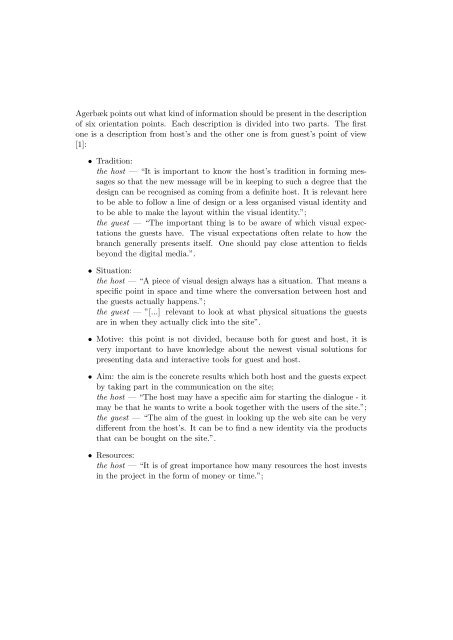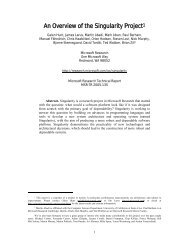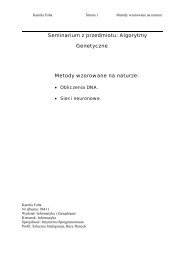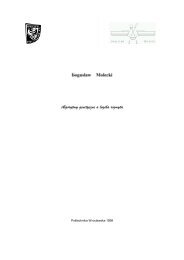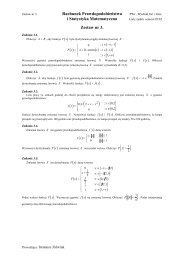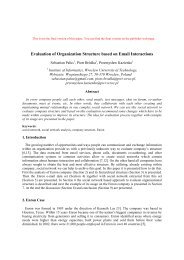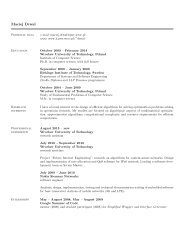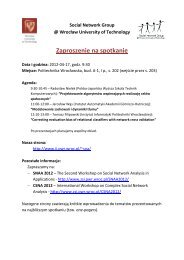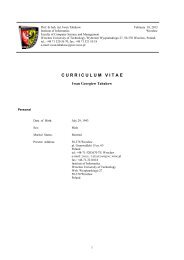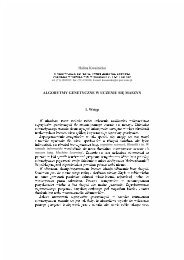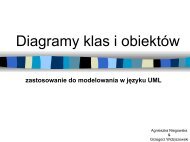Conceptual Methodology of Developing the User Interface
Conceptual Methodology of Developing the User Interface
Conceptual Methodology of Developing the User Interface
You also want an ePaper? Increase the reach of your titles
YUMPU automatically turns print PDFs into web optimized ePapers that Google loves.
Agerbæk points out what kind <strong>of</strong> information should be present in <strong>the</strong> description<strong>of</strong> six orientation points. Each description is divided into two parts. The firstone is a description from host’s and <strong>the</strong> o<strong>the</strong>r one is from guest’s point <strong>of</strong> view[1]:• Tradition:<strong>the</strong> host — “It is important to know <strong>the</strong> host’s tradition in forming messagesso that <strong>the</strong> new message will be in keeping to such a degree that <strong>the</strong>design can be recognised as coming from a definite host. It is relevant hereto be able to follow a line <strong>of</strong> design or a less organised visual identity andto be able to make <strong>the</strong> layout within <strong>the</strong> visual identity.”;<strong>the</strong> guest — “The important thing is to be aware <strong>of</strong> which visual expectations<strong>the</strong> guests have. The visual expectations <strong>of</strong>ten relate to how <strong>the</strong>branch generally presents itself. One should pay close attention to fieldsbeyond <strong>the</strong> digital media.”.• Situation:<strong>the</strong> host — “A piece <strong>of</strong> visual design always has a situation. That means aspecific point in space and time where <strong>the</strong> conversation between host and<strong>the</strong> guests actually happens.”;<strong>the</strong> guest — ”[...] relevant to look at what physical situations <strong>the</strong> guestsare in when <strong>the</strong>y actually click into <strong>the</strong> site”.• Motive: this point is not divided, because both for guest and host, it isvery important to have knowledge about <strong>the</strong> newest visual solutions forpresenting data and interactive tools for guest and host.• Aim: <strong>the</strong> aim is <strong>the</strong> concrete results which both host and <strong>the</strong> guests expectby taking part in <strong>the</strong> communication on <strong>the</strong> site;<strong>the</strong> host — “The host may have a specific aim for starting <strong>the</strong> dialogue - itmay be that he wants to write a book toge<strong>the</strong>r with <strong>the</strong> users <strong>of</strong> <strong>the</strong> site.”;<strong>the</strong> guest — “The aim <strong>of</strong> <strong>the</strong> guest in looking up <strong>the</strong> web site can be verydifferent from <strong>the</strong> host’s. It can be to find a new identity via <strong>the</strong> productsthat can be bought on <strong>the</strong> site.”.• Resources:<strong>the</strong> host — “It is <strong>of</strong> great importance how many resources <strong>the</strong> host investsin <strong>the</strong> project in <strong>the</strong> form <strong>of</strong> money or time.”;


